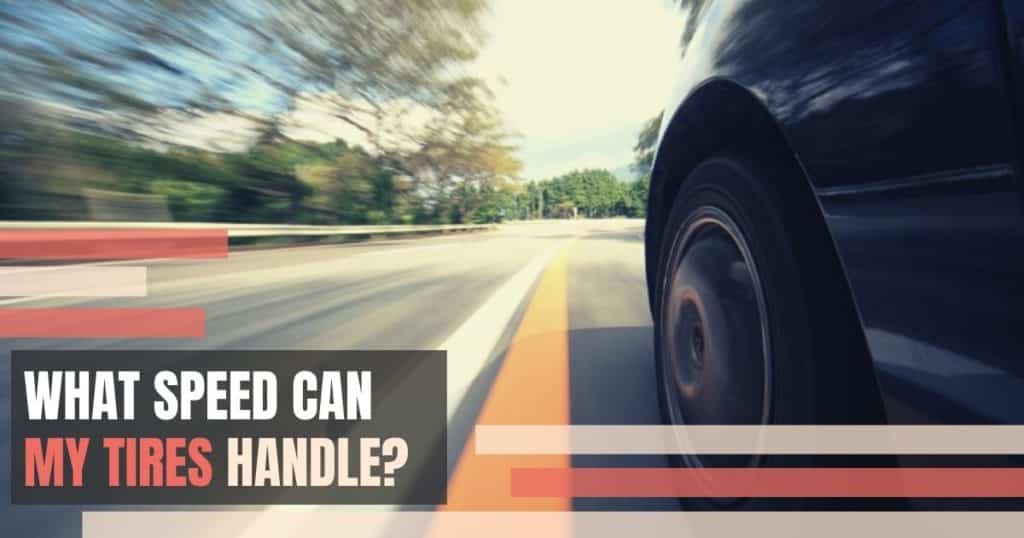When it comes to how much speed your tires can handle, different tires have different ratings. This is called the speed index. Every tire has a rating represented by an alpha character to identify the speed in which the tire is safe to drive at. In this article below I will discuss how to identify the speed rating on your tires and share with you the mph associated with each rating. You can then use this chart to look up your tires rating and determine the safest maximum speed you can drive.
Tire Speed Rating and Safety
Your tires speed index should impact the way you drive. A tires speed rating should meet or exceed the speed in which you drive. This is why it’s important to have 4 tires with matched speed ratings so you know how much your tires can safely handle. You never should push your tires over the speed index listed on the tire with the lowest rating.
Just because a rating indicates that tire has been tested at those speeds, that doesn’t mean you have the best traction, control, and ability to stop.
How to Check the Speed Index on Your Tire
You can find the speed index at the end of the tire code. It will be represented by an alpha character and is often the last character on the sidewall code. There is also a great indepth article here.
The speed index is just a letter, but does not actually tell you how fast you can safely drive. You need to reference the chart that I have provided below. It is important to understand that the letters increase speed in order, except for the letter “H”. The “H” is in the middle of the chart and doesn’t follow in sequence.
- L (75 mph)
- M (81 mph)
- N (87 mph)
- P (93 mph)
- Q (99 mph)
- R (106 mph)
- S (112 mph)
- T (118 mph)
- U (124 mph)
- H (130 mph)
- V (149 mph)
- Z (149+ mph)
- W (168 mph)
- (W) (168+ mph)
- Y (186 mph)
- (Y) (186+ mph)
Note About Ratings Z and Y
For almost all the ratings the speed index is located at the end of the tire code. “Z” speed ratings however are located in the middle for example: 225/50ZR16. Z’s, W’s, and Y’s are speed ratings you will see on exotics and sports cars.
Learn More About Speed Rating
The Higher the Speed Rating, The Lower The Tire Life
The higher the speed rating the shorter the tire life. So the more speed your tires can withstand, the shorter the life cycle of the tire. You can think of this like car racing, in NASCAR and Formula One, the tires perform at top speeds, but need to be changed often. This has to do with how the tire is constructed and reinforced in order to handle such pressure at high velocity.
Practical Example of Speed Rating and Vehicles
For writing this article I decided to go and look at the OE speed ratings on my two cars. My Toyota corolla tires has a “H” raiting and the top speed on the vehicles speedometer is about 120mph. My Mercedes AMG also has an “H” rating, but the top speed on that vehicles speedometer is 180mph.
While I would not drive either vehicle that fast, technically speaking the Corolla can’t even exceed the tires speed rating. On the other hand the Mercedes could and the tires would not be considered safe anymore past 130mph.
How Fast Can I Safely Drive on My Tires?
Ideally your best way to drive safely on your tires is to obey the speed limit on whatever road you are on. No posted speed limits in the US will exceed the ability of your tires. Therefore staying within the limits, your tires should be safe at speed.
Now if you are someone who likes to speed, then checking your speed rating is a good idea. Knowing ahead of time how much your tire can handle can dictate to you how much you can press down on the throttle. Exceeding the max mileage per hour of your speed index can result in reduced traction, handling, and of course a dangerous accident.
Speed Ratings – Wrap Up
While I wouldn’t qualify speed index as something that everyone should know about tires, it is important and comes into play when you need tire replacements. If you are just replacing one it is really important to match the speed index of the other tires. You should check your tires and see what letter you have and then assess how well you drive within it’s limits.

